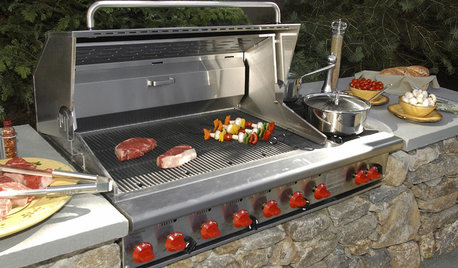Installing an interlock setup - questions
bigyellow
11 years ago
Related Stories

GREEN BUILDINGConsidering Concrete Floors? 3 Green-Minded Questions to Ask
Learn what’s in your concrete and about sustainability to make a healthy choice for your home and the earth
Full Story
REMODELING GUIDESSurvive Your Home Remodel: 11 Must-Ask Questions
Plan ahead to keep minor hassles from turning into major headaches during an extensive renovation
Full Story
REMODELING GUIDESPlanning a Kitchen Remodel? Start With These 5 Questions
Before you consider aesthetics, make sure your new kitchen will work for your cooking and entertaining style
Full Story
KITCHEN DESIGNHow to Add a Kitchen Backsplash
Great project: Install glass, tile or another decorative material for a gorgeous and protective backsplash
Full Story
KITCHEN APPLIANCESFind the Right Cooktop for Your Kitchen
For a kitchen setup with sizzle, deciding between gas and electric is only the first hurdle. This guide can help
Full Story
KITCHEN DESIGNKey Measurements to Help You Design Your Kitchen
Get the ideal kitchen setup by understanding spatial relationships, building dimensions and work zones
Full Story
HEALTHY HOMEHow to Choose a Home Water Filtering System
Learn which water purification method is best for your house, from pitchers to whole-house setups
Full Story
KITCHEN STORAGEShow Us Your Hardworking Pantry
Do you have a clever and convenient kitchen storage setup? Throw some light on the larder and share your pictures and strategies
Full Story
FURNITUREWhat to Know Before You Buy a Sectional
Learn about sizes, arm setups, seat types and more to get the right sectional for your space
Full Story
GREAT HOME PROJECTSHow to Get a Built-In Outdoor Grill
Put fresh-air grilling on the menu with a built-in setup that suits your patio or yard
Full StoryMore Discussions









Ron Natalie
llaatt22
Related Professionals
Columbus General Contractors · Enfield General Contractors · Jamestown General Contractors · Montclair General Contractors · Pico Rivera General Contractors · Rolla General Contractors · Spencer General Contractors · Tuckahoe General Contractors · Walnut Park General Contractors · Watertown General Contractors · Whitman Solar Energy Systems · Hacienda Heights Home Automation & Home Media · Laguna Hills Home Automation & Home Media · South San Francisco Home Automation & Home Media · Winnetka Home Automation & Home MediabigyellowOriginal Author
brickeyee
bigyellowOriginal Author
hendricus
petey_racer
randy427
bigyellowOriginal Author